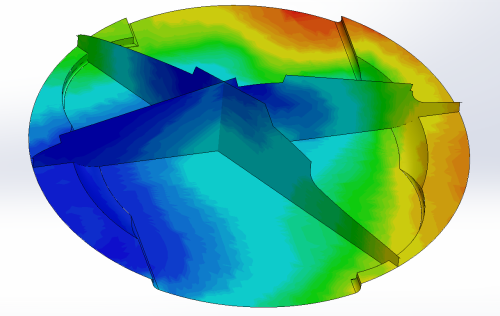Compression Ratio
Introduction
"Compression Ratio" is the term used to describe how much a piston can compress the air within its cylinder.
Static Compression
Static compression, otherwise known as calculated compression, is the rating which most companies use to advertise their product. It is a purely mathematical rating and should only ever be used as a general guide. A properly designed piston will have a true compression ratio within 10% of the static (calculated) compression evenly throughout the cylinder.
Caculating
Calculating the static compression is quite simple. You take the volume of the cylinder + combustion chamber at full piston stroke BDC (Bottom Dead Center), then divide by the volume of the cylinder + combustion chamber at full piston stroke TDC (Top Dead Center).
Exempli gratia: a cylinder volume at BDC is 400 cc (cubic-centimeter of volume). At TDC it is 40 cc. Therefore the compression ratio is 10:1. This is because it compresses 10 cc into 1 cc.
True Compression
Static compression is rarely the same as true compression -- otherwise known as active or working compression. This is due to a few factors, such as engine efficiency and how the combustion chamber and piston interact. This reading takes into consideration dynamic compression. The true compression reading takes is based on the highest pressure area created within the cylinder, which is what your standard pressure gauge will read.
Calculating
Measuring active compression can be difficult, so most people and companies will use cranking compression, which is nearly interchangeable. Cranking compression is calculated by taking the compressed pressure during a dry, assisted crank. This can be done by removing a spark plug on a cylinder, attaching a pressure gauge, disconnecting the fuel pump relay, and using the engine's starter to turn the engine. This will generally produce speeds around 200-300 RPM, and will give you a good idea of overall operation.
Dynamic Compression
Dynamic compression is jargon for dynamic pressure -- the difference in pressure within a system. In this case, our "system" is the area within the cylinder where the dynamic pressure we're interested in is from the compression phase. It is the difference in pressure when the piston has fully compressed the contents of the cylinder. this takes into consideration both how the piston compresses its contents, and how the piston matches the combustion chamber (colloquially "comcham").
There will almost always be at least some dynamic compression, regardless of how well a piston is designed. This is the 10% margin discussed before. It can become more exaggerated as calculated compression increases.
Ideally, a piston will be designed to match the characteristics and design of the combustion chamber. However, with many aftermarket pistons, the designs are done not by fluid engineers or physicists, and they are not relentlessly tested through CFD programs and flow benches. This often leads to a high dynamic pressure, where one area of the cylinder is drastically higher than the other areas of the cylinder. This leads to issues such as pre-detonation, uneven combustion phases, lack of power, and the need to use more fuel.
When you measure the cranking pressure of a cylinder, if it is significantly higher than the static compression, this is due to high dynamic compression from a piston that has not been properly designed for the comcham.
Keeping the true compression as close to the calculated compression is ideal in most cases. Increasing the the true compression ratio though dynamic pressure difference will mean you must tune for the highest pressure seen, but your engine will have a much lower overall efficiency because, for every 1 unit of compression added in one area of the cylinder, 1 unit must be removed from another. Your cylinder cannot contain more air than its volume without the aid of forced induction.

